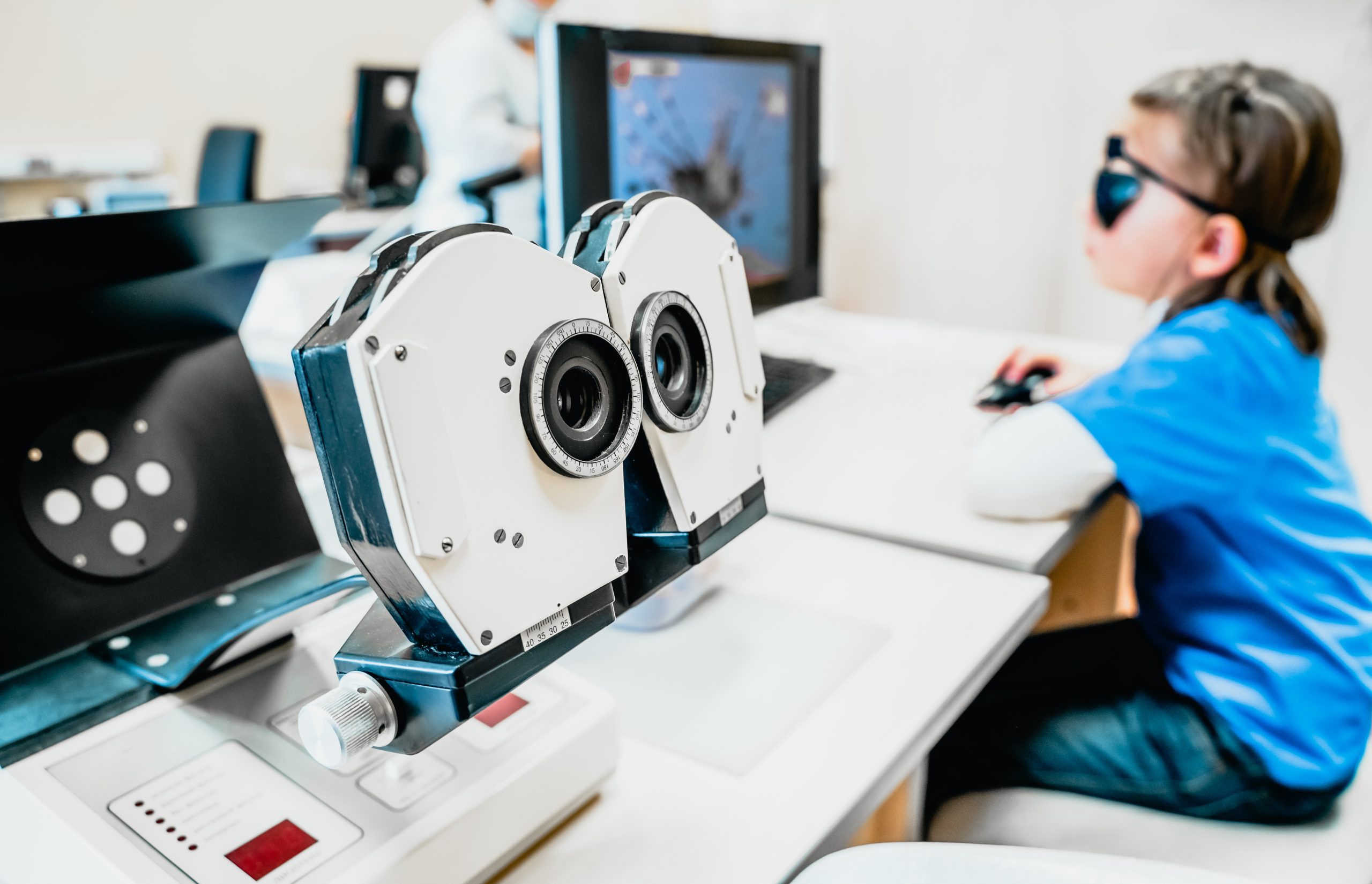Harnessing Virtual Reality for Cutting-Edge Vision Therapy
Introduction
Innovative technologies are revolutionizing the landscape of vision therapy, and virtual reality (VR) stands at the forefront of this transformation. With its immersive and interactive capabilities, VR offers unprecedented opportunities for enhancing traditional vision therapy techniques. In this article, we’ll explore the potential of virtual reality in vision therapy and its promising implications for individuals with visual impairments.
Understanding Vision Therapy
Vision therapy encompasses a range of techniques and exercises designed to improve visual function and alleviate conditions such as amblyopia (lazy eye), strabismus (eye misalignment), and binocular vision disorders. Traditional vision therapy often involves repetitive tasks and exercises performed in a clinical setting under the guidance of a trained therapist.
The Role of Virtual Reality
Virtual reality introduces a new dimension to vision therapy by creating immersive environments that engage and challenge visual abilities in novel ways. VR headsets transport users to simulated environments where they can interact with virtual objects and scenarios, providing a dynamic platform for visual rehabilitation.
Benefits of VR in Vision Therapy
- Immersive Engagement: VR environments captivate users’ attention, promoting sustained engagement in vision therapy activities. The immersive nature of VR encourages active participation and fosters motivation, especially in pediatric patients.
- Personalized Training: VR systems can be customized to target specific visual deficits and adapt the difficulty level based on individual progress. Therapists can tailor VR exercises to address each patient’s unique needs, maximizing therapeutic effectiveness.
- Real-World Simulations: VR simulations replicate real-world scenarios, allowing patients to practice visual skills in contexts relevant to daily life. From navigating virtual environments to performing simulated activities, patients gain practical experience that translates to improved real-world functioning.
- Immediate Feedback: VR systems provide instant feedback on performance, enabling patients to monitor their progress and adjust their techniques in real-time. Immediate feedback enhances learning efficiency and facilitates skill acquisition during vision therapy sessions.
Applications of VR in Vision Therapy
- Amblyopia Treatment: VR-based games and activities can stimulate visual processing in the amblyopic eye, promoting binocular vision and visual acuity improvement.
- Strabismus Rehabilitation: VR environments can simulate binocular vision tasks and visual targeting exercises to enhance eye coordination and alignment.
- Binocular Vision Training: VR systems offer stereoscopic displays that facilitate depth perception training and fusion exercises for individuals with binocular vision disorders.
- Visual Attention and Tracking: VR simulations challenge visual attention and tracking skills through dynamic visual stimuli and interactive tasks, enhancing visual processing speed and accuracy.
Conclusion
Virtual reality holds immense promise as a transformative tool in vision therapy, offering immersive, personalized, and engaging rehabilitation experiences for individuals with visual impairments. As VR technology continues to evolve, its integration into mainstream vision therapy practices has the potential to revolutionize the way we approach visual rehabilitation, ultimately enhancing outcomes and improving quality of life for patients worldwide.
World Eye Care Foundation’s eyecare.live brings you the latest information from various industry sources and experts in eye health and vision care. Please consult with your eye care provider for more general information and specific eye conditions. We do not provide any medical advice, suggestions or recommendations in any health conditions.
Commonly Asked Questions
VR therapy is generally safe for individuals with epilepsy or seizure disorders. However, it’s crucial to consult with a healthcare provider before starting VR therapy to ensure that appropriate precautions are taken and potential triggers are minimized.
While VR therapy offers innovative advantages, it’s not intended to replace traditional vision therapy methods entirely. Instead, it serves as a complementary tool that can enhance traditional therapy approaches and provide additional avenues for rehabilitation.
Individuals with certain medical conditions or pre-existing eye conditions may not be suitable candidates for VR therapy. It’s essential for patients to undergo a comprehensive eye examination and medical evaluation to determine their eligibility and identify any contraindications.
The timeline for seeing improvements with VR therapy varies depending on factors such as the severity of the condition, the frequency of therapy sessions, and individual responsiveness to treatment. Some patients may experience noticeable improvements within weeks, while others may require more extended periods of therapy.
Coverage for VR therapy may vary depending on the patient’s insurance plan and the specific diagnosis requiring treatment. It’s advisable to check with the insurance provider to determine eligibility and coverage options for vision rehabilitation services.
While some VR therapy exercises can be adapted for home use, it’s essential to consult with a vision therapist or healthcare professional before attempting VR therapy independently. Proper guidance ensures safety and effectiveness in achieving therapeutic goals.
The duration of VR therapy sessions can vary depending on the individual’s needs and the specific treatment plan prescribed by the therapist. Sessions may range from 20 minutes to an hour, with regular intervals for breaks to prevent fatigue.
Side effects of VR therapy are typically minimal and temporary, such as eye strain or motion sickness. However, these effects are usually mild and can be mitigated with proper adjustment of VR settings and gradual exposure to virtual environments.
VR therapy can be adapted for various age groups, but its effectiveness may vary depending on individual factors and the specific condition being treated. Pediatric patients often find VR therapy engaging and motivating, but adults can also benefit from tailored VR interventions.
VR therapy primarily focuses on conditions like amblyopia, strabismus, and binocular vision disorders. While it may have potential applications in other areas of vision rehabilitation, research in this area is ongoing.
news via inbox
Subscribe here to get latest updates !







